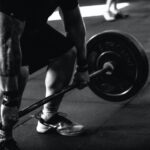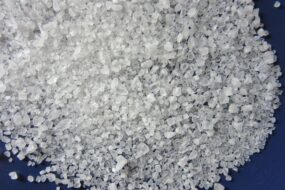
Are you curious about what lifting weights can do for your body? Strength training and weightlifting have become increasingly popular due to their numerous health benefits.
In this article, we will explore the benefits of lifting weights, how it works, different types of weight lifting, standard lifting techniques, finding a lifting routine that works for you, and more. So, let’s dive in!
Table of Contents (click to expand)
The Benefits of Lifting Weights
Increased Muscle Mass
One of the most well-known benefits of lifting weights is increased muscle mass. Weight training can lead to muscle hypertrophy, which is an increase in the size of muscle fibers. This leads to muscular adaptations and gains in strength.
Resistance training is particularly practical for building a lean body and muscle mass and losing fat. While cardiovascular exercise can help with fat loss, weight training is beneficial for building muscle tissue, which increases metabolism and helps burn more calories at rest.
Strength Training
Strength training is another critical benefit of lifting weights. Lifting weights can improve your ability to perform everyday tasks, carry heavy loads, and maintain good posture. It’s important to note that strength and power training are different. Strength refers to the ability to exert force against resistance, while power is the ability to exert pressure quickly.
Improved Body Composition
Another benefit of lifting weights is improved upper body and composition. Regular resistance training can decrease body fat and increase lean muscle mass, leading to a more refined physique. This is particularly important for those looking to lose weight and improve their overall health.
A systematic review of randomized controlled trials found that weight training significantly decreased body weight, body fat, and fat mass. Therefore, lifting weights helps to reduce fat mass, which helps to burn calories and lose weight.
Health Benefits
Not only does weightlifting help with physical appearance, but it also provides numerous health benefits. Regular resistance training can improve bone mineral density, reduce blood pressure, and decrease the risk of cardiovascular disease. Additionally, lifting weights can increase the number of calories burned at rest, which can help with weight loss.
Resistance exercise has also been found to impact brain health positively. A study published in Sports Medicine found that resistance training exercises can improve cognitive function, including memory and attention.
How Lifting Weights Works
Resistance Training Basics
But how does weight training work? Resistance training involves using weights, resistance bands, or bodyweight exercises to challenge the muscles. This creates stress on the muscle fibers, leading to microtears. The muscle cells then adapt and grow stronger in response to this stress.
The Science of Muscle Growth
Muscle growth occurs when muscle fibers are damaged and repair themselves through hypertrophy. This process involves an increase in the size of muscle fibers and is stimulated by physical activity, or aerobic exercise, particularly weight training.
To encourage muscle growth, it’s important to overload the muscles progressively. This means gradually increasing the weight or resistance used in a workout. Over time, this leads to improvements in strength and muscle mass.
The Role of Nutrition
Nutrition plays a crucial role in building muscle. To support muscle growth, consuming an adequate amount of protein is essential. The American College of Sports Medicine recommends that individuals participating in resistance training consume 1.2-1.7 grams of protein per kilogram of body weight daily.
In addition to protein, it’s essential to consume sufficient calories to support muscle growth. While gaining muscle while on a low-calorie diet is possible, it’s not optimal. A moderate calorie surplus and adequate protein intake are recommended for maximum muscle growth.
The Benefits of Lean Muscle Mass
Improved Metabolic Health
Lean muscle mass can improve metabolic rate, leading to improved health outcomes. Muscle tissue is more metabolically active than fat tissue, which burns more calories at rest. This leads to a higher resting metabolic rate and more calories burned throughout the day.
Better Performance
In addition to improving metabolic health, lean muscle mass can improve athletic performance. This is particularly important for those participating in sports or other physical activities.
Long-Term Health Benefits
Lean muscle mass can also lead to better health outcomes later in life. As we age, we lose muscle mass, leading to decreased mobility and an increased risk of falls. By building and maintaining muscle and bone mass, through resistance training, we can improve our quality of life as we age.
Different Types of Lifting
Powerlifting
Powerlifting is a type of weightlifting that involves three main lifts: the squat, bench press, and deadlift. Powerlifting focuses on lifting as much weight as possible in these three lifts.
While powerlifting is often associated with more weight with experienced athletes and competitive lifters, beginners can also benefit from incorporating these lifts into their workout routine.
Olympic Lifting
Olympic lifting is another type of weight that involves two main lifts: the snatch and the clean and jerk. These lifts require explosive power and technique, making them popular among athletes and coaches in sports such as weightlifting and track and field.
Like powerlifting, Olympic lifting can be challenging for beginners but can provide significant benefits with consistent practice and proper form.
Bodybuilding
Bodybuilding is a type of weightlifting that focuses on building muscle mass and achieving a defined and toned physique. Unlike powerlifting and Olympic lifting, bodybuilding competitions are judged on a participant’s physical appearance rather than their lifting ability.
While bodybuilding may not be for everyone, incorporating some bodybuilding techniques and exercises into a workout routine can help improve overall strength and muscle definition.
Common Lifting Techniques
Proper Form and Technique
Proper form and technique are crucial for avoiding injury and maximizing lifting results. Maintaining good posture, engaging the correct muscle groups, and using a full range of motion during exercises are essential.
A certified personal trainer or experienced lifter can guide proper technique and help identify any muscular imbalances or weaknesses that could lead to injury.
Warm-Up and Cool-Down
Warming up and cooling down properly before and after lifting weights can help prevent injury and improve recovery. A proper warm-up should include light cardio and dynamic stretching, while a cool-down should include static and foam rolling.
Rest and Recovery
Rest and recovery are crucial for muscle growth and preventing injury when lifting heavy weights again. It’s essential to allow adequate time between workouts for the muscles to recover and repair themselves.
In addition to rest days, incorporating recovery techniques such as massage, foam rolling, and proper nutrition can help improve recovery and prevent injury.
Finding a Lifting Routine
Beginner’s Guide
A basic lifting routine is recommended if you’re new to lifting weights. This can include squats, deadlifts, bench presses, and overhead presses.
It’s essential to start with lighter weights and focus on proper form and technique before gradually increasing the weight or resistance.
Intermediate and Advanced Routines
For more experienced lifters, intermediate and advanced lifting routines can provide a greater challenge and help break through plateaus. This can include powerlifting and Olympic lifting movements and resistance exercises such as more advanced bodybuilding techniques.
Customizing Your Routine
Personalizing a lifting routine based on individual goals and fitness levels is essential. When customizing a lifting way, factors include training frequency, strength training exercise, selection, and progression.
Working with a certified personal trainer or experienced lifter can help identify specific areas for improvement and develop a customized lifting routine that works for you.
What are all the benefits of lifting weights?
Lifting weights is one of the best ways to improve your heart health and fitness. Some of the benefits of lifting weights include:
- Increased muscle mass and strength: Lifting weights causes micro-tears in your muscle fibers, which repair and grow stronger during rest periods. Over time, this leads to increased muscle mass, strength, and endurance.
- Improved bone density: Weightlifting stresses your bones, which signals your body to increase bone density and reduce the risk of osteoporosis.
- Better body composition: Building muscle through weightlifting can help to reduce body fat and improve body composition, leading to a more toned and fit appearance.
- Increased metabolism: Muscle tissue is more metabolically active than fat tissue, meaning more muscle can improve your overall metabolism and calorie burn.
- Improved cardiovascular health: Lifting weights can help to lower blood pressure, improve cholesterol levels, and reduce the risk of heart disease.
- Reduced risk of chronic diseases: Regular weightlifting has been shown to reduce the risk of chronic diseases like type 2 diabetes and some forms of cancer.
What does lifting weights do to your muscles?
Lifting weights is a form of resistance training that causes micro-tears in your muscle fibers. These tears then repair and grow more robust during rest periods, increasing muscle mass, strength, and endurance.
When you lift weights, your muscles contract against the resistance of the weight, causing the fibers that build muscle to break down and rebuild during recovery periods. This process is known as hypertrophy, and it is what leads to increased muscle size and strength.
Will I lose belly fat by lifting weights?
While lifting weights can help increase muscle mass and reduce overall body fat, it isn’t a targeted approach for losing belly fat. Belly fat is often a result of factors like genetics, hormones, and diet, and it can be challenging to target with exercise alone.
That said, lifting weights can help increase your overall metabolism and calorie burn, contributing to fat loss throughout your lower body. Combining weightlifting with a healthy diet and regular cardio exercise can also help to reduce overall body fat, including abdominal fat.
What happens if you lift weights every day?
Lifting weights daily can benefit experienced lifters with enough endurance and recovery capacity. However, for beginners or those with less experience, lifting weights daily can lead to overtraining and injury. When lifting weights, you are essentially causing damage to your muscles, which need time to repair and recover before the next session.
If you don’t allow proper recovery time, you risk fatigue, injury, and decreased performance. For most people, 2-3 lifting sessions per week is a good starting point, with rest days in between to allow for proper recovery. As you gain more experience and build up your recovery capacity, you can gradually increase the frequency and intensity of your lifting sessions.
Conclusion
Lifting weights offers numerous benefits for improving overall health, fitness, and physical appearance. Whether you’re a beginner or an experienced lifter, incorporating weight training into your exercise routine can provide significant benefits for building muscle mass, improving strength, and achieving a lean and toned physique.
Remember to prioritize strength training exercises with proper form and technique, incorporate rest and recovery techniques, and personalize your lifting routine to meet your individual goals. With consistency and dedication, lifting weights can help you achieve the results you desire and improve your overall quality of life.





































